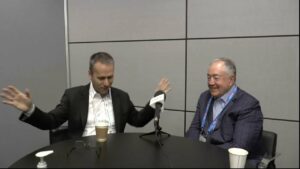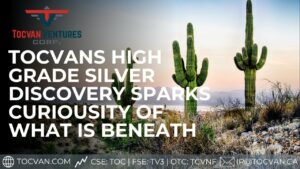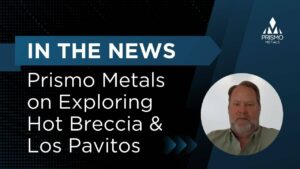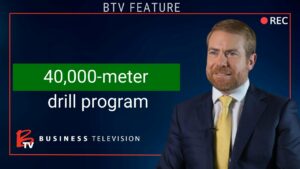Westminster Resources Ltd. ("the Company”) , TSX.V:WMR) reports 2015 results from Guyacan targets located in the NW portion of the 100% owned 21,228 hectare EL COBRE Property , Sonora Mexico.
Highlights from the rock sampling program are:
- North Guyacan : 12.1 g/t gold and 16.8 g/t silver
- Red Soil and SGH soil geochemical target : 11.3 g/t gold and 212.0 g/t silver
- Middle Guyacan : 9.2 g/t gold and 9.9 g/t silver
- South Guyacan : 675 ppb gold and 126 g/t silver and 2.5 % copper
- South Guyacan-Far east : 18.0 g/t gold and 400 g/t silver
At this early stage, most samples are composite rock chip or selected grab samples.
The 2015 work program to date has consisted of prospecting and field geology. Previous exploration by the Company at Guyacan has included a helicopter airborne VTEM-MAG geophysical survey, an extensive soil geochemical survey (710 samples), a soil gas hydrocarbon geochemical survey (1074 SGH samples), and geological mapping and prospecting, all systematically completed during the 2011 – 2014 seasons. The exploration programs have followed-up on anomalous circular and linear magnetic low features obtained from the airborne VTEM-MAG geophysical helicopter survey. The recent positive results have expanded the number, and defined in more detail, zones of alteration and surface mineralization in subcrop-outcrop across the 3.5 kilometer wide expression of the airborne circular magnetic geophysical anomalous patterns. New discoveries included zones peripheral to precious metal bearing porphyry systems, skarns, unroofed porphyry system veins, stockworks and breccia vein mineralization.
The Guyacan target is situated in flat lying Sonora ranch lands with thin young volcanic cover rocks or sand and gravel material overlying much of the bedrock geophysical anomalies expression. The significant ASTER IMAGERY patterns coincident with the disrupted airborne magnetic survey response of circular features and super-imposed linear magnetic lows have been mapped as epithermal and porphyry –style alteration. This is interpreted by the Company as the expression of multiple phase intrusive events related to this largely unroofed mineralized porphyry system.
NORTH GUYACAN Target
A 500 m long target area designated "North Guyacan" is exposed as a zone of intense clay and sericite intrusive alteration with red ochre iron oxides on fractures , and in quartz veinlets and breccia zones. Several historic hand dug workings are present in the partially exposed altered granite and granodiorite and on local structures. Free gold grains were panned from well developed, red, iron oxide, boxwork- textured material . The geochemical results and textures observed in these iron rich, oxidized-weathered rocks collected from numerous pits and their sorting dumps suggest derivation from copper sulphides such as chalcocite.
An example of results from a composite grab sample of this type of dump oxide material from one North Guyacan zone graded 15.4% iron, 12.1g/t gold, 16.8 g/t silver , 0.26 % lead and 675 ppm copper. Other composite quartz+ iron oxide- rich grab samples from scattered pits across the North Guyacan zone graded 17.9 g/t, 16.9g/t , 16.3g/t and 12.1 g/t gold. Some of the red iron oxide material hosts secondary copper minerals (chrysocolla) which enrich the copper contents to over 1% Cu. When accompanied with elevated precious metal pathfinder elements like bismuth, tellurium and mercury, the samples graded up to 22.3g/t silver.
The Company interprets these NORTH GUYACAN historic diggings as being at high levels in the peripheral halo of the main mineralizing system and considers this exposed precious metal high grade zone to be a high priority, drill -ready target.
At a site starting about 300 meters south from the North Guyacan historic workings area, a well -developed granular, glassy quartz breccia with a hematite –specularite matrix is intermittently exposed for about 100 meters. This breccia trends to the south adjacent to and parallel with the N-S strike of the granite –granodiorite intrusive bodies' contact before dipping under gravel overburden. Variations of this same type of grey quartz breccia are found adjacent to and in sericite alteration zones scattered across Guyacan’s 3.5 kilometer wide geophysically anomalous magnetic target pattern. A typical occurrence in the magnetic lows is present at the South-South Guyacan target located 3.5 kilometers to the south on the southern edge of the main circular magnetic feature. At the North Guyacan target, these quartz breccia example samples graded 11.6 g/t, 7.0 g/t, 2.4 g/t silver with low levels of gold contents.
RED SOIL + SGH GEOCHEMICAL ANOMALIES TARGET
About 800 meters SE from NORTH GUYACAN historic diggings a 50 meter by 200 meter area of intensely altered sericite-iron oxide bearing granite is exposed. Rusty hematite quartz veinlets and iron oxides in fractures are exposed in creek banks and flat areas. Intensely red coloured soils are found with sericite bordering quartz veinlets and iron oxide veins. Most of this area, underlain by anomalous SGH soil geochemistry, is flat lying and covered by debris. Results from a composite sample of float (iron oxide+ quartz stockwork and veinlets with strong sericitic borders) returned 105 ppm molybdenum, 10.1 g/t silver and 127 ppb gold. The Company interprets this mineralization as part of the porphyry systems stockwork development.
Importantly, the highest grade mineralization found at this RED SOIL +SGH target appears to be overprinted on the main alteration zone .This is interpreted to be intermediate sulphidation epithermal vein material from massive quartz-hematite-malachite vein-brecciation. The best composite grab sample graded 80.0 g/t silver, 13.5 g/t gold with a polymetallic content of 1.1 % lead, 0.14 % molybdenum, 0.3 % zinc, 0.9 % copper and 6.6% iron. The sample was well leached, contained secondary copper mineralization (malachite) and is strongly anomalous in content of the precious-metal pathfinder suite of elements mercury, bismuth, tellurium, tungsten, arsenic and antimony.
Another sample from the RED SOIL+ SGH target area was not totally weathered and leached of sulphur as it contained 0.19 % sulphur. This vein sample graded 6.5 % iron, 10.68 % lead, 1.7 % copper and again contained high grades of precious metals with gold at 11.3 g/t and silver at 212 g/t. This sample of intermediate sulphidation vein material again had a distinctive epithermal pathfinder element signature with high contents of mercury (7927 ppb), tellurium (11 g/t), bismuth (245 ppm) , arsenic (224 ppm) and barium (859 ppm).
The Company considers this exposed zone to be a high priority, drill -ready target.
MIDDLE GUYACAN SKARN – HORNFELS and Felsic unit zone
Approximately 1600 meters SE from the NORTH GUYACAN old hand dug workings, the Company has made important discoveries during follow-up of precious metal soil survey geochemical anomalies. Several small exposures of mineralized underlying bedrock were located on a ridge as windows through a thin veneer of Tertiary andesitic volcanic rocks. This ridge area is adjacent to an extensive SGH soil anomaly target. The newly discovered MIDDLE GUYACAN SKARN-HORNFELS-FELSIC UNIT target is 400 meters SE from the high grade intermediate sulphidation epithermal veins in the RED SOIL target previously described. The newly located zone consists of secondary copper mineralization in magnetite-epidote bearing skarn rocks and silicified, altered intrusive rocks (Hornfels?) found in bedrock windows in the ridge and talus cover at anomalous soil survey sample sites.
Examples of precious metal results from composite rock material collected from sample sites in the MIDDLE GUYACAN anomalous soil zone are 3.7 g/t gold + 5.0 g/t silver; 2.1 g/t gold + 4.0 g/t silver; 5.7 g/t gold + 15.0 g/t silver; 1.2g/t gold + 1.3 g/t silver and 9.2 g/t gold + 9.9 g/t silver. The samples are generally low in base metals and pathfinder elements. However , a site with minor malachite staining contained very anomalous contents of tellurium (17.6 ppm Te ).
About 100 meters south of the above MIDDLE GYUACAN gold in soil target , malachite stained magnetite and epidote bearing skarnoid bedrock material is found as a window in an historic hand dug shallow pit. Copper stained dump composites from two samples graded 0.5% and 1.86% copper, 10.0 % and 13.0% iron, 189 ppb and 1127 ppb gold , and 490 ppb + 1127 ppb silver.
The Company interprets these SKARN-HORNFELS -FELSIC zones as halo styles of mineralization typically found peripheral to porphyry systems. The Company plans additional work to determine the extent of these as-yet undefined precious metal targets, in preparation for drill testing.
MIDDLE GUYACAN COPPER SOIL + OLD HAND DUG PIT ZONES
Approximately one kilometer west of the MIDDLE GUYACAN SKARN ridge zone in a flat area, some old shallow hand diggings in intensely altered sericitic and red ochre stained iron oxide rich rock debris were discovered .
This new 50 m by 300 m subcropping malachite and chrysocollla secondary copper mineral bearing zone lies about 300 m further west from the intermittent low ridge of altered granitic subcrop (dyke) which runs north to south joining the NORTH GUYACAN and SOUTH GUYACAN-COPPER SHAFT mineralized zones. The soil geochemical survey has coincident anomalous base and precious metals and an elevated content pathfinder element suite approximating the area where iron-rich to red ochre bearing boxwork- textured , chrysocolla -quartz rich samples have been collected. Assays are pending but previously, a single quartz vein, prospector -collected float rock sample in the area contained 73 g/t silver and 238 ppb gold.
The Company considers this area to be a high priority target. This MIDDLE GUYACAN COPPER SOIL and OLD PIT ZONE surficial expression confirms the large scale of the mineralized porphyry system extending 3.5 kilometers north-south across the entire airborne geophysical anomaly.
SOUTH GUYACAN TARGET
This prospect area lies on a north to south linear trend of the altered granitic dyke which bisects the 3.5 kilometer wide magnetic low comprising the Guyacan airborne target anomaly .The variably sericitic- altered ,low granitic ridge and adjacent flats contain anomalous geochemical soil survey multi element sample sites. Two east to west granite dykes and related structures cross cut the ridge.
The SOUTH GUYACAN – COPPER SHAFT zone is located in the granitic dyke ridge about 2.7 kilometers directly south of the old NORTH GUYACAN diggings. It is characterized by an E-W crosscutting structure hosting quartz and iron oxides on fractures and in sericitic altered granite. The 20 meter deep, hand-dug, shaft-dump material is generally comprised of quartz breccia vein and hematitic-sericite granite with abundant secondary copper (chrysocolla and malachite) staining similar to that exposed in bedrock at the SOUTH COPPER SHAFT crosscutting structure.
A composite grab sample from the hand dug, shaft – dump rock material graded 2.5 % copper, 126 g/t silver and 675 ppb gold with elevated content of the pathfinder elements tellurium and bismuth. About 175 meters further to the south from the COPPER SHAFT along the altered main GUYACAN granitic N-S ridge(dyke) quartz veins and a crosscutting south dyke structure host chrysocolla in altered biotite to argillic altered granite. A quartz rich composite sample from this structure with chrysocolla staining graded 0.4% copper, 22.7g/t silver , 244 ppb gold, with high contents of the pathfinders tellurium ( 24 ppm) and bismuth (714 ppm).
The Company considers the SOUTH GUYACAN- COPPER SHAFT area ready for drill testing.
The FAR SOUTH – SOUTH GUYACAN zone is about a kilometer further south from the historic SOUTH GUYACAN SHAFT. This target lies in a flat lying area on the southern edge of the entire GUYACAN circular pattern airborne magnetic anomaly. Precious metal soil survey geochemical anomalous sample sites are present in an 200 meter area where sericite altered granite occurring as subcrop is intruded by various styles and intensities of quartz breccia bodies and veins. These showings are similar to the quartz breccia found 3.5 kilometers north at the NORTH GUYACAN zone and at other zones scattered across the GUYACAN target. At the FAR SOUTH -SOUTH GUYACAN zone, the breccias are grey, glassy quartz and quartz-hematite matrix filled breccias containing low levels of base metals and minor elevated mercury, bismuth and tellurium contents. Quartz-hematite breccia samples from various locations along the 200 meters of the N to S strike graded : 1.4 g/t, 1.7 g/t , 4.6 g/t , 4.8 g/t, 3.1 g/t and 10.0 g/t silver with the two best gold content breccia rock composites grading 111 ppb and 306 ppb gold.
SOUTH GUYACAN – FAR EAST EPITHERMAL TARGET
In 2015 during follow-up of anomalous geochemical gold-in soil sample sites located about 1000 to 1200 meters directly east from the SOUTH GUYACAN – COPPER SHAFT Target, some old surface prospect diggings were located on an east facing Tertiary volcanic cover ridge and slope. These diggings are adjacent to flat land to the east where an area of some hundreds of meters of clay-sericite and red soil altered material is exposed. The diggings and this area of intense alteration are positioned on the flank of the more intense low magnetic patterns present on the far eastern side of the 3.5 kilometer wide circular magnetic anomaly outlining the entire GUYACAN mineralized system.
The Company has designated the zone epithermal (perhaps intermediate sulphidation?) because of the presence of grey-blue silica and classic chalcedony plus an unusual suite of epithermal pathfinder and base metal elements contained in dominantly iron oxide material. Gold, silver and polymetallic mineralization are scattered over a 100-150 meter area in windows through the Tertiary andesite volcanic cover rocks on the ridge.
Highest values in composite and grab samples of leached iron oxide -rich (7.2 % to 8.7 % iron )with epithermal silica material assayed : 4.87 % , 10.15 % , and 9.35 % lead ; 0.24 % to 0.39 % copper ; 0.17 % to 0.26 % zinc and up to 690 ppm molybdenum. Respectively to the lead content listed above , these samples assayed 7.2 g/t gold, 18.3 g/t gold and 4.6 g/t gold and respectively 310 g/t silver, 400 g/t silver ,and 413 g/t silver.
Compared to the many other occurrences of enriched precious metals with epithermal pathfinder element anomalies found across the entire magnetic pattern GUYACAN TARGET, the SOUTH GUYACAN -FAR EAST EPITHERMAL TARGET is unique. Geochemical pathfinder element epithermal signatures such as high vanadium (as high as 4373 ppm V ), high mercury ( as high as 2272 ppb Hg), high arsenic (as high as 1409 ppm As) and enriched tellurium (1.9 ppm Te) accompanied by the high content of gold plus silver and base metals is interpreted by the Company to indicate that a well developed , episodic , overprinting hydrothermal system was active during the emplacement of the epithermal to porphyry style portions of the GUYACAN TARGET system.
The Company considers the SOUTH GUYACAN-FAR EAST EPITHERMAL TARTGET as a drill ready zone of possible intermediate epithermal style mineralization, perhaps overprinted and structurally controlled. This target is emplaced near the far eastern edge of the over burden covered 3.5 kilometer wide semi-circular GUYACAN porphyry system magnetic signature.
Westminster Resources President Glen Indra stated “ The grades reported in this Press Release from the several new 2015 surface precious –metal and copper discoveries at the Guyacan Project have demonstrated and brought into focus the outstanding exploration potential of this large mineralizing system. The Company will continue its 2015 exploration campaign at the gold-silver –copper Guyacan Project.”
This news release has been reviewed and approved by Glen Macdonald, P.GEO ( a Qualified Person for the purpose of National Instrument 43-101, Standards for Disclosure for Mineral Projects).
"Glen Macdonald"
___________________________________
Glen Macdonald, P.Geo.
DIRECTOR
About Westminster:
Managed by an experienced team, the Company is focused on exploring and developing projects on its 28,632 hectare El Cobre and 13,398 hectare Navojoa properties in Sonora, Mexico. The El Cobre property contains among other prospects, the 100% owned Guyacan project and the Cumbral-San Bartolo project. On the Navojoa property the Company is exploring gold-silver-copper targets.
For further information regarding Westminster Resources Ltd., please contact Bill Conlin at 604-608-0400, Toll Free: 1-877-608-0007 or visit our website at www.westminsterres.com.
Quality Assurance and Quality Control
In the field, the sample location and detailed sample description note taking is followed by systematic sample numbering and tagging at the field sample site and in the plastic sealed rock sample numbered bag. The up to 2 kilogram prospecting rock samples are submitted by the Company directly to the sample preparation laboratory located in Hermosillo Mexico or they are picked up by the Prep Lab at the Company’s secure warehouse and office facility in Obregon completing secure chain of custody. At the PREP LAB the samples are dried -crushed -pulverized and then sample pulp splits are created so that each rock powder split of 100-200g can be sent via secure courier to the ACME analytical laboratory in Vancouver Canada.
ACME Laboratory is now known as BVML , the globally certified ,Bureau Veritas Minerals Laboratories where the samples were geochemically analyzed with all over limit samples assayed by ore grade methods. The laboratory QA-QC program included blanks, duplicates and certified control reference standards inserted randomly into the sample stream. Cautionary Note: Geochemical results and the assay data derived from these subcrop to outcrop rock samples discussed in this press release cannot be relied upon to be representative of the grade of mineralization found at surface or at depth in drill core. The rocks are weathered samples generally leached of their primary sulphides and may contain secondary minerals. The single “grab” hand- sized samples, “composite-grab”samples from numerous similar rocks, or “composite -chip” rock samples from outcrops are collected in an irregular to randomly spaced manner over an area based upon the geologists’ and/or technicians’ judgement and experience .The data is used by the Company to guide further exploration and evaluation of the mineral potential of the target prospects.
Neither the TSX Venture Exchange nor its Regulation Services Provider (as that term is defined in the policies of the TSX Venture Exchange) accepts responsibility for the adequacy or accuracy of this release.
This news release may contain forward-looking information which is not comprised of historical facts. Forward-looking information involves risks, uncertainties and other factors that could cause actual events, results, performance, prospects and opportunities to differ materially from those expressed or implied by such forward-looking information. Forward looking information in this news release may include, but is not limited to, the Company's objectives, goals or future plans. Factors that could cause actual results to differ materially from such forward-looking information include, but are not limited to, those risks set out in the Company's public documents filed on SEDAR. Although the Company believes that the assumptions and factors used in preparing the forward-looking information in this news release are reasonable, undue reliance should not be placed on such information, which only applies as of the date of this news release, and no assurance can be given that such events will occur in the disclosed time frames or at all. The Company disclaims any intention or obligation to update or revise any forward-looking information, whether as a result of new information, future events or otherwise, other than as required by law.
























